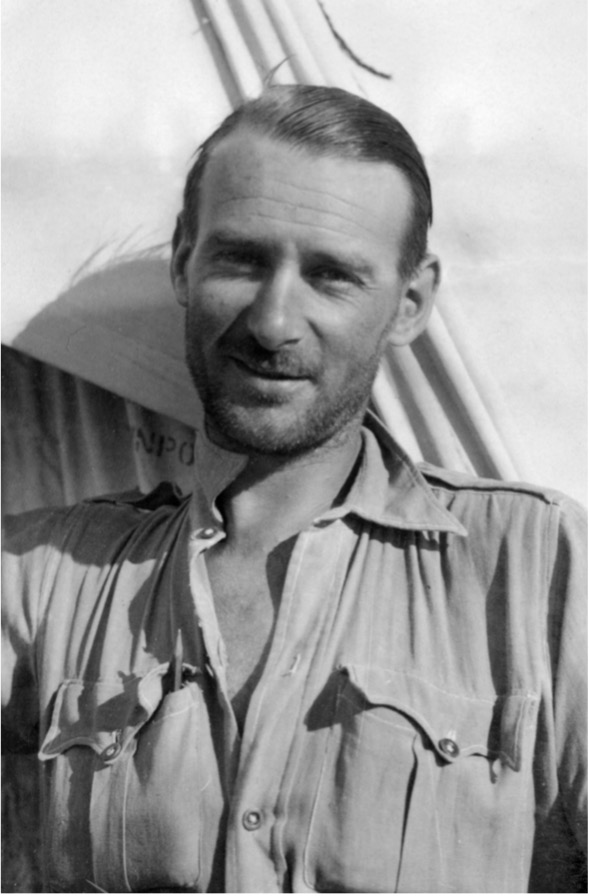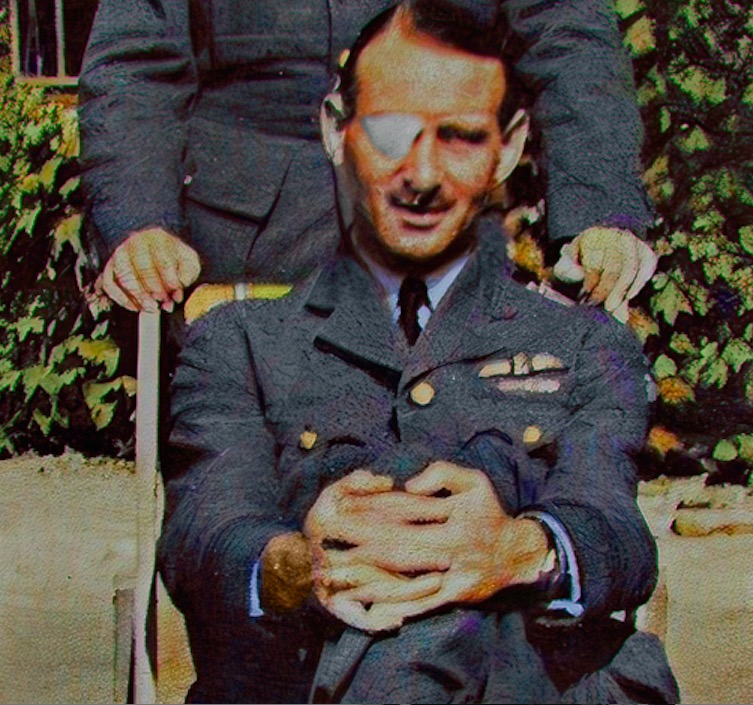LOTT, C George (#11)

#11
Air Vice Marshall C George LOTT CB CBE DSO DFC (5 e/a)
Royal Air Force
“One of the first of The Few”
“Rightly hailed in his obituary as ‘One of the very First of the Few’ Lott, despite losing an eye in combat on 10th July and remaining in command of 43 Squadron during the commencement of the Battle when post war the official date of the Battle of Britain was designated as the 11th July 1940 Lott unjustly was denied the BOB campaign clasp. Many of the ‘Few’ themselves believed the Battle actually commenced on July 1st, 1940. Under Lott’s command several pilots became aces: Peter Townsend [Signatory #12], Frank Carey [Signatory #27], Jim Hallowes [Signatory #14] & Tom Dalton-Morgan [Signatory #306]. The collector therefore wrote to AVM Lott and was proud to include his signature in his collection of ‘The Few.'” [*SEE BELOW*]


The story of this extraordinary photograph is told in on The Battle of Britain 80 Introduction page of this website. George Lott is in the centre, in the eye-patch covering the loss of an eye sustained in action on July 9th, 1940.
He’d returned to his Command, the legendary 43 (F) ‘Fighting Cocks’ Squadron – a rare circumstance. His Squadron was already legendary – and the friendship of Peter Townsend [Signatory 12] and Caesar Hull [c.f Signatory #6] (sitting, far right in the photo), and the excellence and tight-nit nature of this group of pilots, was a factor in Lott’s thinking when he arrived to command. He won respect the hard way… His story is told in a fine collection of Lott’s own papers, compiled by his son Squadron Leader David Lott:

Here David provides some of the background to the story:

From Tangmere Military Aviation Museum:
“George Lott joined the RAF as a Halton apprentice in 1922, trained as a pilot in 1927 and was commissioned in 1933. By 1939 he had risen to squadron leader rank and took over command of No 43 Squadron (the ‘Fighting Cocks’) four days after war was declared on 7 September 1939. He led the squadron with distinction during the spring of 1940 and destroyed two enemy aircraft. He was awarded the DFC at the end of May 1940.
On 9 July 1940, flying from RAF Tangmere and with Pilot Officer Carey and Sergeant Mills, Lott met head-on six German Bf 110s off Littlehampton, Sussex. Lott was wounded when a cannon shell exploded on his armoured windscreen. Blinded in his right eye and suffering intense pain and with his Hurricane on fire he decided to attempt a return to base. However, three miles short of Tangmere, the increasing flames forced him to bail out at the low level of seven hundred feet. His parachute opened and his Hurricane crashed on Fontwell racecourse and was completely burnt out with only the tail wheel recognisable. This was given by the squadron’s Engineering Officer to a local policeman who had been guarding the wrecked Hurricane – he said it was just what he needed for his wheel barrow.
Lott’s injury meant that he remained non-operational for the remainder of the war. He later commanded the flying training programme provided by the seven British Flying Training Schools (BFTS) in the USA. George Lott retired from the RAF with the rank of air vice marshal. He died on 31 December 1989 and is buried in St Andrew’s churchyard, Tangmere.”
GEORGE LOTT’S CATERPILLAR TIE (AWARDED TO THOSE SAVED BY PARACHUTE) AND HIS No 4 BFTS (MESA, ARIZONA) TIE ARE DISPLAYED IN THE MUSEUM’S TANGMERE HALL.”






Further material in the IWM Collections:
https://www.iwm.org.uk/collections/item/object/205447740
https://www.iwm.org.uk/collections/item/object/205023610
https://www.iwm.org.uk/collections/item/object/205219399
https://www.iwm.org.uk/collections/item/object/205446957
https://www.iwm.org.uk/collections/item/object/1060009567 (x-ref BROADHURST)
https://www.tangmere-museum.org.uk/artefact-month/george-lotts-ties
1238 https://www.iwm.org.uk/collections/item/object/1060035141
| Date: | 09-JUL-1940 |
| Time: | day |
| Type: | Hawker Hurricane Mk 1 |
| Owner/operator: | 43 (China-British) Squadron Royal Air Force (43 (China-British) Sqn RAF) |
| Registration: | P3464 |
| C/n / msn: | FT-A |
| Fatalities: | Fatalities: 0 / Occupants: 1 |
| Other fatalities: | 0 |
| Aircraft damage: | Written off (damaged beyond repair) |
| Location: | 3 miles from RAF Tangmere, Chichester, West Sussex –  United Kingdom United Kingdom |
| Phase: | Landing |
| Nature: | Military |
| Departure airport: | RAF Tangmere, Chichester, West Sussex |
| Destination airport: | RAF Tangmere, West Sussex |
Narrative:
Hawker Hurricane Mk.I P3464, 43 Squadron, RAF: Written off (damaged beyond repair) when crashed on landing at RAF Tangmere, Chichester, West Sussex. Pilot injured. According to the official Air Ministry File into the incident (File AIR 81/1058): “Squadron Leader C G Lott: injured; Hurricane P3464 lost in air operations, 9 July 1940”
On July 9th 1940, while leading six Hurricanes on patrol 40 miles south of the Isle of Wight, he engaged a Messerschmitt 110 in a head-on attack. He was badly wounded in the face and lost the sight of one eye. Nevertheless he flew his badly damaged aeroplane back to within three miles of Tangmere and baled out at 700 feet only after the engine seized up. He was awarded the DSO on 3 August 1940 for this incident:
“3 Aug 1940 – R.A.F. AWARDS, DISTINGUISHED SERVICE ORDER.
LOTT, Squadron Leader C.G., D.F.C.
“Since June 1 this officer has led his squadron on operational patrols over Dunkirk, Amiens and Abbeville, and other parts of enemy occupied territory. In July, as leader of a section of Hurricanes, he pressed home an attack in adverse weather against six Messerschmidt 110’s. During the combat Squadron Leader Lott’s aircraft was badly hit but despite an injury which eventually necessitated the removal of an eye, he brought his aircraft to within three miles of the base before he was compelled to abandon it. He has personally destroyed two enemy aircraft and possibly another. This officer has displayed outstanding leadership and an intense desire to engage the enemy”
Squadron Leader Lott was hospitalised as a result of this incident, and remained “non effective sick” until authorised to return to active duty on 18 September 1940. During the remainder of his service he continued to fly, although not on front line operations. His last flight was made on the day he retired in 1959.
George Lott retired from the RAF with the rank of air vice marshal. He died on 31 December 1989 and is buried in St Andrew’s churchyard, Tangmere.”




